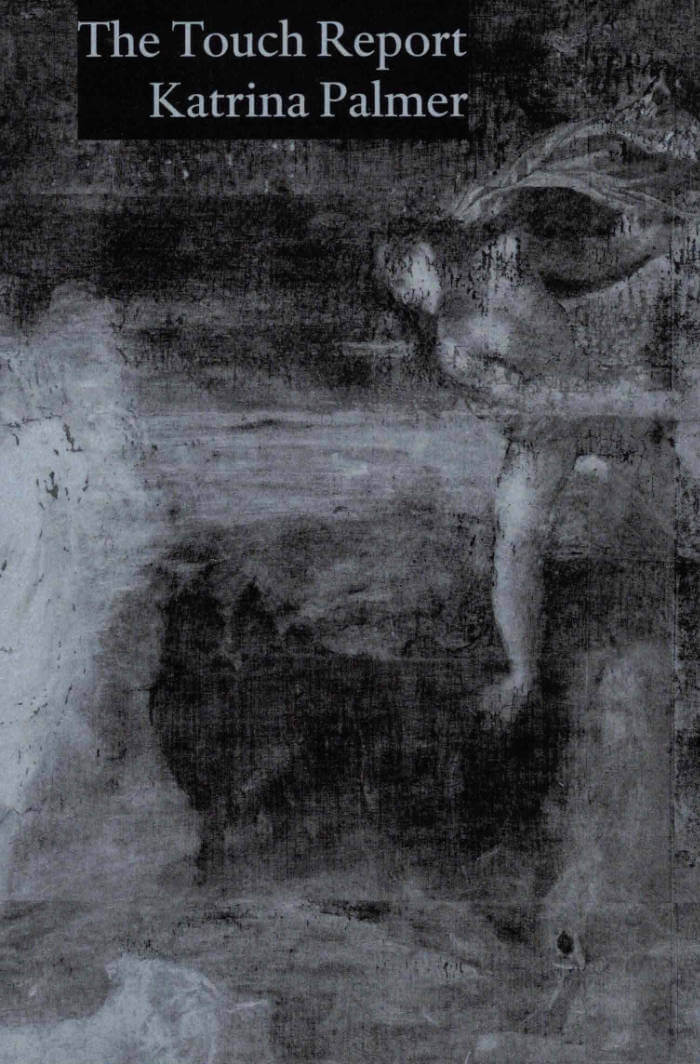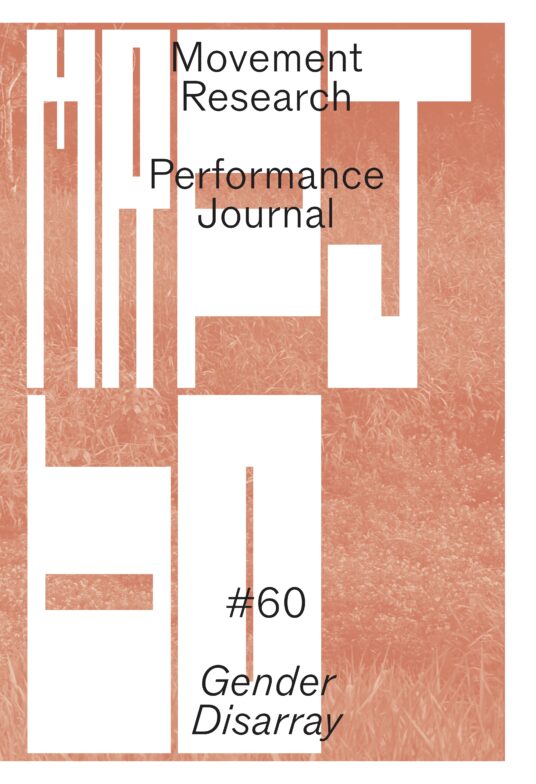
Dangerous Dances
This text finds the intimate affinity between dance and philosophy in the concept of problem and invites the reader to perceive dance and philosophy as a form of ballistics: the art of throwing.
Language: English

This text finds the intimate affinity between dance and philosophy in the concept of problem and invites the reader to perceive dance and philosophy as a form of ballistics: the art of throwing.
Language: English

A philosopher’s path towards embodiment through Tai Chi and psychedelics.
This book proposes different forms of embodiment that are not necessarily leading to production of subjectivity or territorialized identities but rather putting the “self” at risk allowing us to be emancipated from the mandatory illusion of self-realization. This can be facilitated by a daily commitment with a set of body altering practices that disjoint us from the ordinary accustomed experience of reality and provide us access to “other” layers of the real. These practices grant access to the primary control centers of the body that regulate frequencies of energy and consciousness in a deeper way and enable the body to unfold in different dimensional spaces of experience: rendering sensible the multi-layered energetic body.

An experiment in book making, which takes up the form of the LP record as a starting point for re-configuring the haptics of the printed book. Presented as a collection of unbound pages inside a gatefold record sleeve, the publication includes a pressed record, as well as written, visual and sonic contributions from scholars, poets, artists, choreographers and DJs.
Through the logic of the detail, each contributor imaginatively (re)produces Ernie Barnes’s iconic painting The Sugar Shack as an archive of personal histories and a universe of intergenerational connections. Held together as an album, it is a performance to be made at home, which invites readers/listeners to feel art’s histories and to be in them with their bodies.
d.a. carter with contributions by Taylor Renée Aldridge; Samiya Bashir; La Marr Jurelle Bruce; DJ Lynnée Denise, Jennifer Harge, Duane Lee Holland, Jr., William H. Mosley, III, Zoé Samudzi, S*an D. Henry-Smith, Melanie Stevens and Phillip B. Williams.

École nationale supérieure des beaux-arts de Lyon
Claire Moulène, Emmanuel Tibloux
Le cinquième numéro de la revue d'art et de recherche « rétro-prospective » est consacré à l'artiste et performeuse Andrea Fraser, figure clé de l'art des années 1990 et 2000 et du courant de la « critique institutionnelle » (une monographie complétée par une grande enquête sur l'espace critique réalisée auprès d'une cinquantaine d'artistes, critiques et philosophes internationaux).
Avec contributions de Kader Attia, Eva Barto, Sophie Bonnet-Pourpet, Marie de Brugerolle, Gregory Buchert, Daniel Buren, Marie Canet, Gregory Castéra, Inès Champey, Thierry Chancogne, Claire Fontaine, François Cusset, Judith Deschamps, Paul Devautour, Philippe Durand, Joao Enxuto & Erica Love, Andrea Fraser, Nicolas Frespech, Dora García, Romain Grateau, Emmanuel Guez, Thomas Hirschhorn, Aliocha Imhoff & Kantuta Quirós, Béatrice Josse, Franck Larcade, Ju Huyn Lee, Sven Lütticken, Fabrice Mabime, Bartomeu Mari, Chus Martínez, Gwenael Morin, Claire Moulène, Jean-Luc Moulène, Yan Moulier Boutang, Vincent Normand, François Pain, Gerald Petit, Anne Querrien, Thierry Raspail, Sinziana Ravini, Delphine Reist & Laurent Faulon, Christophe de Rohan Chabot, Phillippe Roux, Jean-Baptiste Sauvage, Thomas Schlesser, Ida Soulard, Fabien Steichen, Michel Surya, Emmanuel Tibloux, Vier 5, Ulf Wuggenig, Italo Zuffi.

‘Katrina Palmer’s The Touch Report asks a question that remains in motion for the duration of this extraordinary book. What is here? What’s still here? Here, Palmer writes an account of subjugation that is gestural, an on-going sequence of expulsions and punctures… Is there a kind of writing so transient it’s barely there? In Palmer’s writing, we encounter an ethics of presence and form that is deeply moving, completely and unbearably real.’ — Bhanu Kapil, author of How To Wash A Heart
An artist is invited to take up residency in a gallery filled with historical paintings. They are meticulously crafted, maintained, and revered. She begins to make an audit of the paintings, outlining the depictions of violence, subjugation and physical tension on public display. Eleven arrows in a torso, someone’s hair cut as they sleep, a man nailed to a cross. Horses, decapitations, memorable lobsters.
Written in sparse, urgent fragments that invite closer reading, The Touch Report, turns the reader’s gaze into the dark, to question our notions of ‘civilisation’.
Want to see something real, says the artist as she creeps through the darkness, keeping a log.
Katrina Palmer was commissioned by the National Gallery, London, as part of the 2024 National Gallery Artist in Residence Programme in collaboration with the Contemporary Art Society, generously supported by Anna Yang and Joseph Schull. This book is published as a result of research made during this residency.

Movement Research Performance Journal
Kay Gabriel, Amalle Dublon and 2 more
Under the direction of four contributing editors—Amalle Dublon, Kay Gabriel, Keioui Keijaun Thomas, and Anh Vo— we’ve assembled a new body of work by mostly trans and queer artists reflecting on the keyword “gender” and its relation to contemporary performance. Their work moves across multiple genres of writing, from analytic essays to poetry to performance scripts.
“Read My Lips” is a phrase that will be familiar to longtime readers of the Movement Research Performance Journal—so familiar that the mere reference will bring to mind an image posted by the artist collective GANG, an image that lies at the heart of one of the journal’s most spectacular moments. Issue #3, with its focus “Gender Performance,” was published in 1991 amid that era’s Culture Wars, receiving almost immediately negative reception from government officials (the NEA threatened to withdraw funding from Movement Research) and many members of the dance community (who considered Issue #3 to be deliberately provoking the so-called “war,” intentionally taking a political position that some worried might comprise future funding of the field). In the thirty-three years since its publication, Issue #3 has developed a patina familiar to many artist-activist histories that are looked upon with romance and nostalgia, often by those for whom that history is only a fantasy (rather than a lived experience).

Isabelle Sully, Becket Flannery and 1 more
Tangents is an English-language online review platform focused on writing about the Dutch art scene-on what is happening both within the borders of the Netherlands and about Dutch-based artists presenting work beyond them. Born from a frustration with the prevalence of objectivity and imposing house styles in the majority of art writing commissioned by leading platforms, Tangents instead encourages contributors to approach criticism from within the specificities and focuses of their own writing practice.
Tangents publishes a monthly review written by a writer from our stable of permanent contributors. This publication is the first printed compendium of recent writing, published on the occasion of Tangents' mentorship pro-gram, for which the founding editors each supported a young writer through development and to publication. The 2024/25 mentees were Mehmet Süzgün, Lou Vives and Dido W.